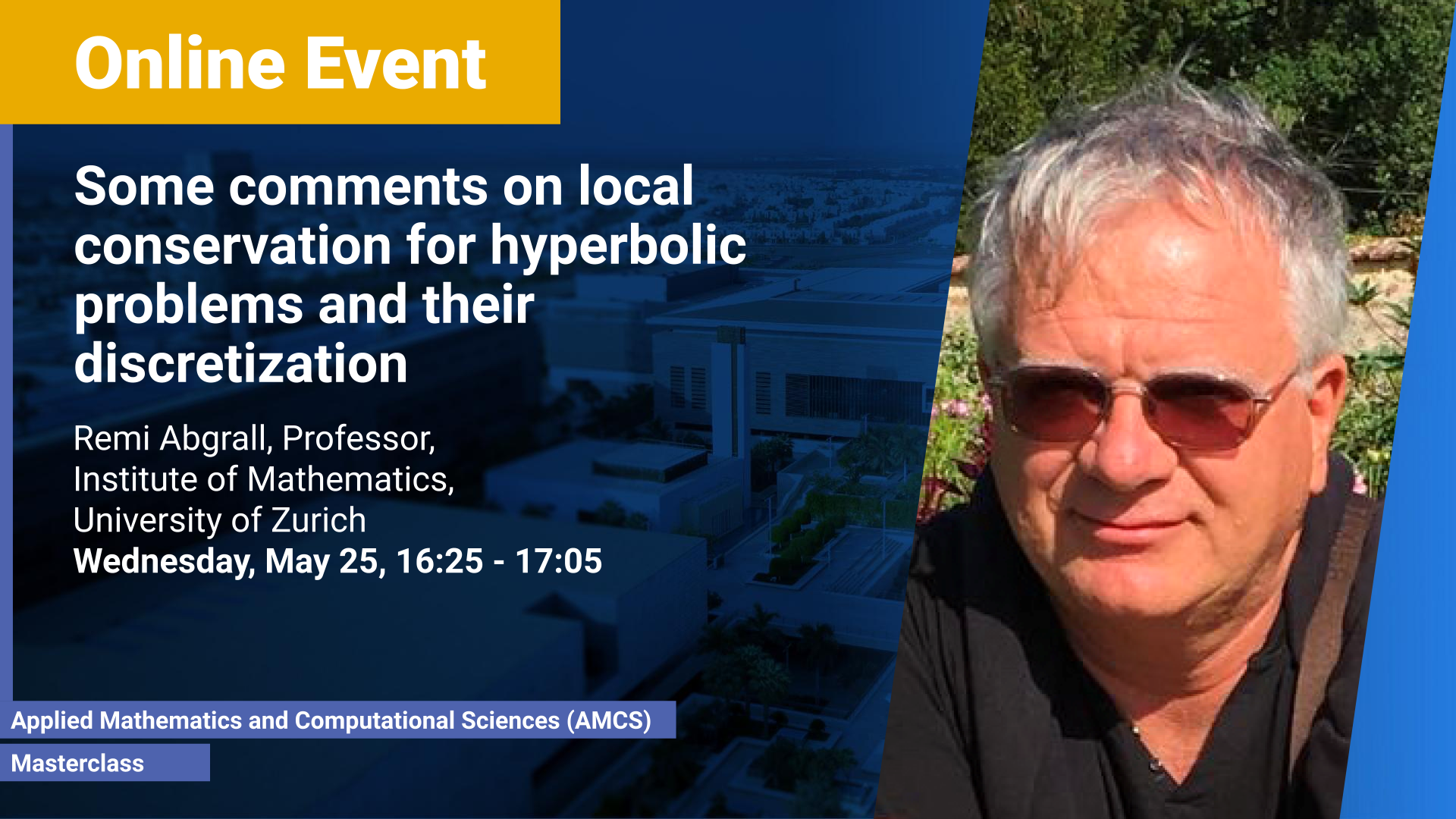Masterclass in Numerical Analysis and Scientific Computing
Abstract
Since the celebrated paper by Lax and Wendroff, it is known what kind of structure should have a numerical scheme to guarantee convergence to a weak solution of the problem, modulo stability conditions of course. Is the story over? In a way yes, since this structural form by flux has been used for 60 years. However, I will show and detail how this can be revisited, and what kind of bonus one can expect. Using this new framework, I will show how to construct (systematically) schemes that satisfy additional constraints, such as conservation of the entropy.
Brief Biography
Rémi Abgrall is a former student of Ecole Normale Supérieure de Saint Cloud (the predecessor of ENS Lyon) where he was a student in mathematics (1981-1985). After his studies in pure mathematics in Orsay, and after the <<agrégation de mathématiques>>, he changed orientation to fluid mechanics. He did his PhD thesis at the Laboratoire de Météorologie Dynamique (LMD) at Ecole Normale Supérieure under the supervision of Claude Basdevant (he worked on a semi-Lagrangian model of 2D turbulence). He graduated in December 1987. After that, he was not willing to work in academia and was hired in September 1987 as a research engineer at ONERA, initially to work on the simulation of multispecies flows for internal aerodynamics. He was lucky to work under the supervision of Jean-Louis Montagnier, with whom he learned a lot. He spent a short time at ONERA since he was hired as a research scientist in September 1988 at INRIA Sophia Antipolis, in the team SINUS headed by Alain Dervieux. The initial project was to work on hypersonic flows for the Hermes project.
At INRIA, he had the opportunity to go to ICASE during the whole summer of 1991, and again in 1992. This allowed him to get into contact with Ami Harten with whom he worked during his stay at UCLA from 1993 to 1994. Thanks to the support of Ami Harten, and the INRIA people (Alain Dervieux, Gilles Kahn, and Pierre Bernhard), he spent a year (1995-1996), right after his return from UCLA, at the Courant Institute in New York. In September 1996, he became a professor at the University of Bordeaux I in Talence, then full professor in 2001, and distinguished professor in 2008. He was involved in the creation of one of the first team projects of the to-be Inria center in Bordeaux, and from 2008 to 2013, he was the scientific leader of an Inria Team (Bacchus). In 2008, he was awarded an ERC advanced grant (ADDECCO). He left Bordeaux for the University of Zurich in January 2014. There, since October 2016, he is a member of the Research Council of the Swiss National Science Foundation. Since August 2021, he is the director of the Institute of Mathematics of the University of Zurich.
He is or has been an associate editor of many scientific journals: the Journal of Computational Physics, Mathematics of Computation, Computers, and Fluids, the Journal of Scientific Computing, Mathematical Modelling and Numerical Analysis (M2AN), Communication in Computational Physics, Communication on Applied Mathematics and Computation, Mathematics and Computers in Simulation, Mathematical Models and Methods in Applied Sciences (M3AS). He has been co-editor of the International Journal for Numerical Methods in Fluids. He belongs to the editorial boards of several book series: Mathématiques et Application (Springer), Series in Applied and Numerical Mathematics (de Gruyer). Since September 2015, he is editor in chief of the Journal of Computational Physics.
In 2001, he was the recipient of the SMAI GAMNI prize given by the French Academy of Sciences. He has been selected the class 2022 of the SIAM Fellows.
